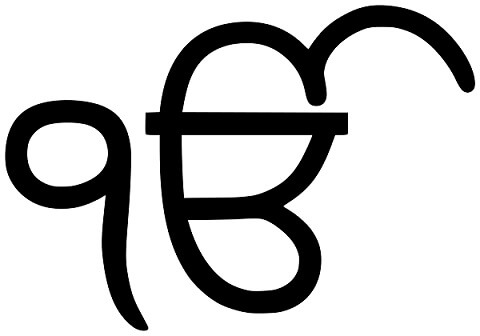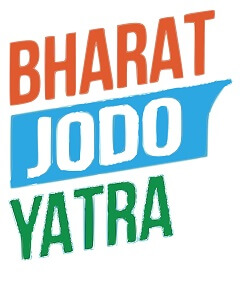The Nasadiya Sukta (also known as the Hymn of Creation) of the Rigveda is one of the most iconoclastic and questioning (in a dialectic sense) inquiries into the origin of the universe. Stirringly, it asks some fundamental questions about the origins of the Universe and Gods: “Who really knows? Who will here proclaim it? Whence was it produced? Whence is this creation? Gods came afterwards, with the creation of this universe. Who then knows whence it has arisen?” Such a catechizing spirit asking if even Gods know the truth or not is absolutely unthinkable in the rigid and dogmatic Abrahamic religions. The highest knowledge of the Vedas was compiled at the end of each Veda in the form of Upanishads. These expound on the nature of the supreme truth through multifaceted stories.
Upanishads also contain the four mahavakyas of Advaita Vedanta (the school of Hinduism propounding nondual consciousness as the ultimate truth). Each mahavakya conveys the same message about the supreme truth. The four mahavakyas are: Tat Tvam Asi (Thou art that), Aham Brahmasmi (I am Brahma), Prajnanam Brahma (highest wisdom is Brahma), and Ayam Atma Brahma (the Self is Brahma). These mahvakayas form the core of the Advaita School and Hinduism in general. The millions of manifestations of the Gods are all bound together by this thread of the Supreme Reality being ONE.
As Rigveda says, Ekam Sat Vipra Bahudha Vadanti (The truth is one, wise refer to it with varied names), and so the many great souls that have since traversed the subcontinent have expressed the nature of the Supreme Reality in myriad ways. These include the names of figures like Krishna, Ashtavakra, Buddha, Adi Shankaracharya, Guru Nanak, Ramakrishna Paramhansa, Narayana Guru, and Ramana Maharishi. These great souls have expressed in many ways the nature of the Supreme Truth. There were so many more great souls like Basaveshwara, Mirabai, Kabir, Tulsidas, Tukaram, and others of the Bhakti tradition who expressed the Supreme Truth through their devotion to a personal God rather than the formless One.
While Krishna transmitted the knowledge of the Supreme Reality to Arjuna in the form of the greatest song ever written (the Bhagavad Gita), Ashtavakra composed his succinct Ashtavakra Gita to express the knowledge in a very no-nonsense manner purely through the lens of Gyan Yoga. Krishna’s Bhagavad Gita is perhaps the most impactful literary creation in the history of humankind. The Bhagavad Gita expounds on the nature of the Supreme Reality through all four ways to attain knowledge (Karma Yoga, Raja Yoga, Bhakti Yoga, and Dhyana Yoga). Since devotion comes quite naturally to us, the easiest path to the ultimate truth was said to be Bhakti Yoga by Krishna.
Buddha took this even further. In Buddhism, the all-pervading nondual consciousness of the Advaita tradition became the singularity of the Buddhist tradition (beautifully, two sides of the same coin). After meditating on the Absolute, Buddha diluted his message to a form that the masses could easily understand. Thus, he codified his teachings into the Noble Eightfold Path to live one’s life. These were Right Understanding, Right Thought, Right Speech, Right Action, Right Livelihood, Right Effort, Right Mindfulness, and Right Concentration.
As per my knowledge, after the Upanishads, it was Adi Shankaracharya who explicitly wrote on the nature of the Supreme Reality in the most crystal clear manner. The Nirvanashatkam composed by him may be the most comprehensive yet concise meditation on the Supreme Reality. For example, the last verse says:
I am all-pervasive. I am without any attributes, and without any form. I have neither attachment to the world, nor to liberation (mukti). I have no wishes for anything because I am everything, everywhere, every time, always in equilibrium. I am indeed, That eternal knowing and bliss, the auspicious (Śivam), pure consciousness.
This nature of the Supreme Reality beyond the human conception of morality, desires, emotions, qualities, and other human traits is most wonderfully expressed in his composition of Gyan Yoga. Every single word has been most thoughtfully chosen and it is divine to listen to the composition sung by musical maestros. And yet, the great dichotomy of Shankara is that he also was perhaps the greatest exponent of Bhakti Yoga of his time who established the four mathas in the four corners of the subcontinent (Joshimath, Jagannath Puri, Dwarka Puri, and Sringeri) and wrote divinely melodious bhajans like Bhaja Govindam.
All of the above discussion brings me to the great Guru Nanak, specifically to Guru Nanak’s mool mantar. In my personal opinion, Guru Nanak’s description of the Supreme Reality in the mool mantar is unparalleled in how succinctly and effortlessly he weaved Advaita’s central message in a few words. It says: Ik oa(n)kaar sathnaam karathaa purakh nirabho niravair akaal moorath ajoonee saibha(n) gur prasaadh ॥ ॥ jap ॥ aadh sach jugaadh sach ॥ hai bhee sach naanak hosee bhee sach ॥
One creator, name is truth, agentive (doer) being, without fear, without hatred, timeless form, unbegotten, self-existent, known by the Guru’s grace. Recite: True at the beginning, true through the ages, is yet true, O Nanak, and will be true.
That’s it! In just these many words, Guru Nanak most efficiently expressed the nature of the Supreme Reality in a way that humble mortals like us could recite and meditate on. It is not only the first verse of the Guru Granth Sahib but Guru Nanak also asked all his followers to repeatedly meditate on the mool mantar, every day to realize the truth. Guru Nanak’s composition may be the easiest way to realize the Supreme Truth through the path of Gyan Yoga.
Even the first three words (Ik Oankaar Sathnaam) of the mool mantar can be said to encapsulate the absolute truth fully within them, the rest being the details. In Punjab, where I presently reside, it is very common to see Ik Oankaar represented everywhere by the two associated characters (see above image) from shops to vehicles to monuments to tattoos on people’s wrists. Such is the pervasiveness and impact of the mool mantar that it has perhaps helped more people go nearer the realization of the truth than any other symbol/verse in the history of this great land.

 IIIT Allahabad Global Alumni Meet Guest of Honor Speech
IIIT Allahabad Global Alumni Meet Guest of Honor Speech